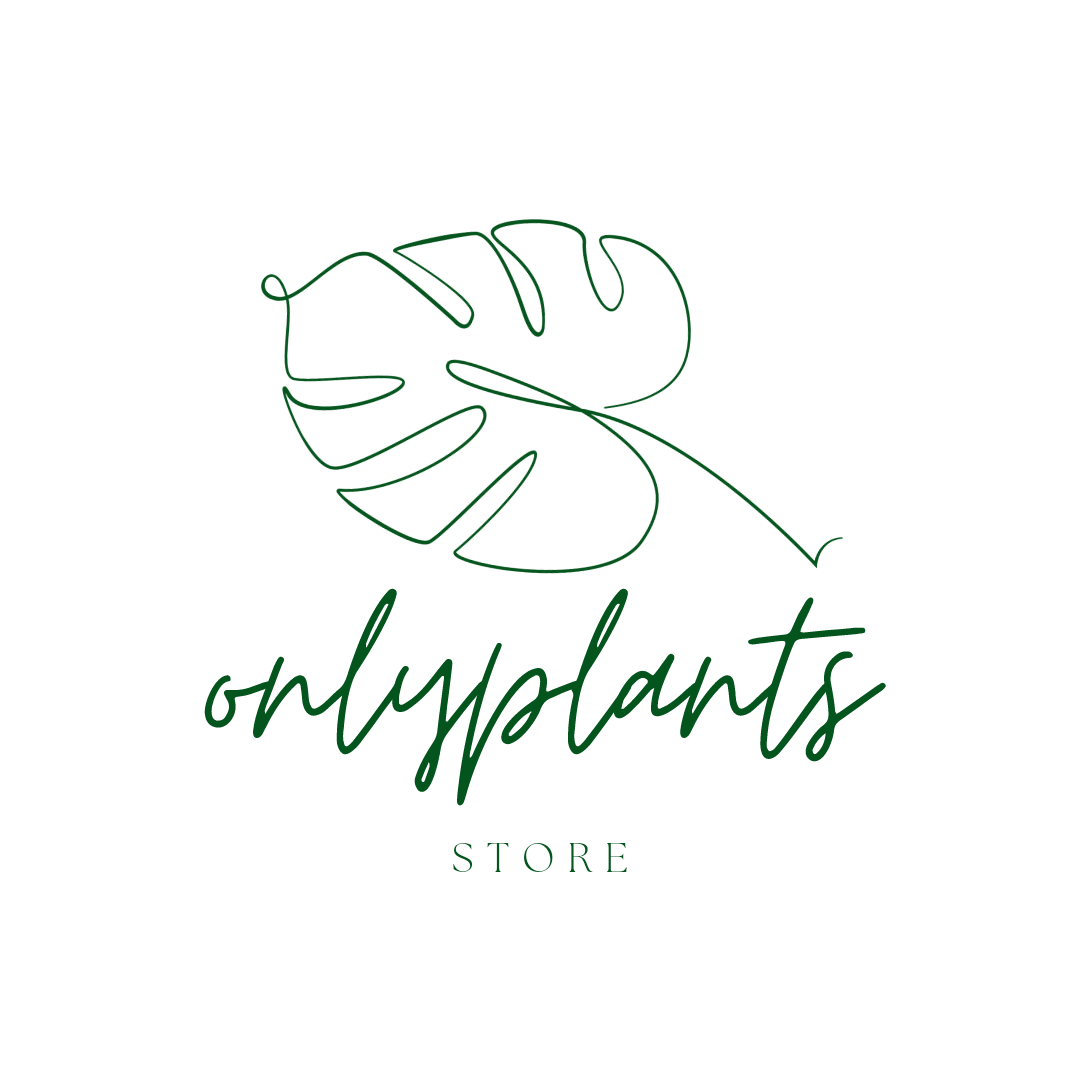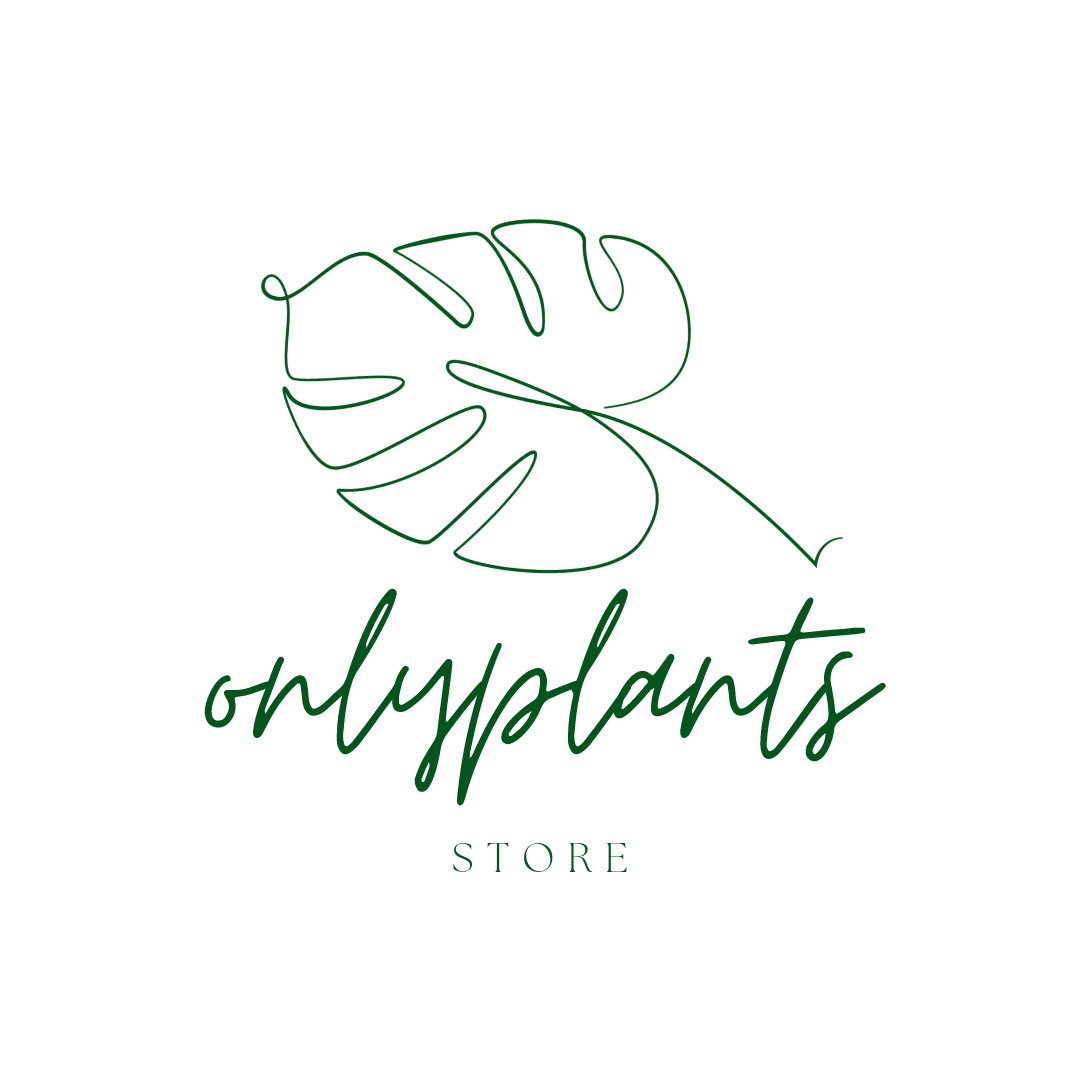With its elongated leaves and prominent veins, the Anthurium Warocqueanum, commonly known as the Queen Anthurium, is a stunning plant. When fully grown, its leathery leaves can reach up to 6 feet (2 meters) in length!
Although Anthuriums are often thought to be finicky and difficult to care for, the Anthurium Warocqueanum is surprisingly manageable with the right care. Ensure you avoid overwatering, provide warmth (65–85°F or 18–29°C), maintain humidity above 50%, and use a fertile, well-draining potting mix, and your Queen Anthurium will thrive.

Origins
The Anthurium Warocqueanum was first described by Thomas Moore in 1878. Native to the lowland forests of Colombia, young Queen Anthuriums grow at altitudes up to 4,500 feet (1,430 meters). Initially, they grow near the forest floor, but as they mature, they climb other plants or trees as epiphytes.
Dark Form vs. Light Form
The Anthurium Warocqueanum comes in two forms: the “Dark Form” with darker leaves and the “Light Form” with lighter green leaves. Despite their visual differences, these forms are the same species and require the same care.
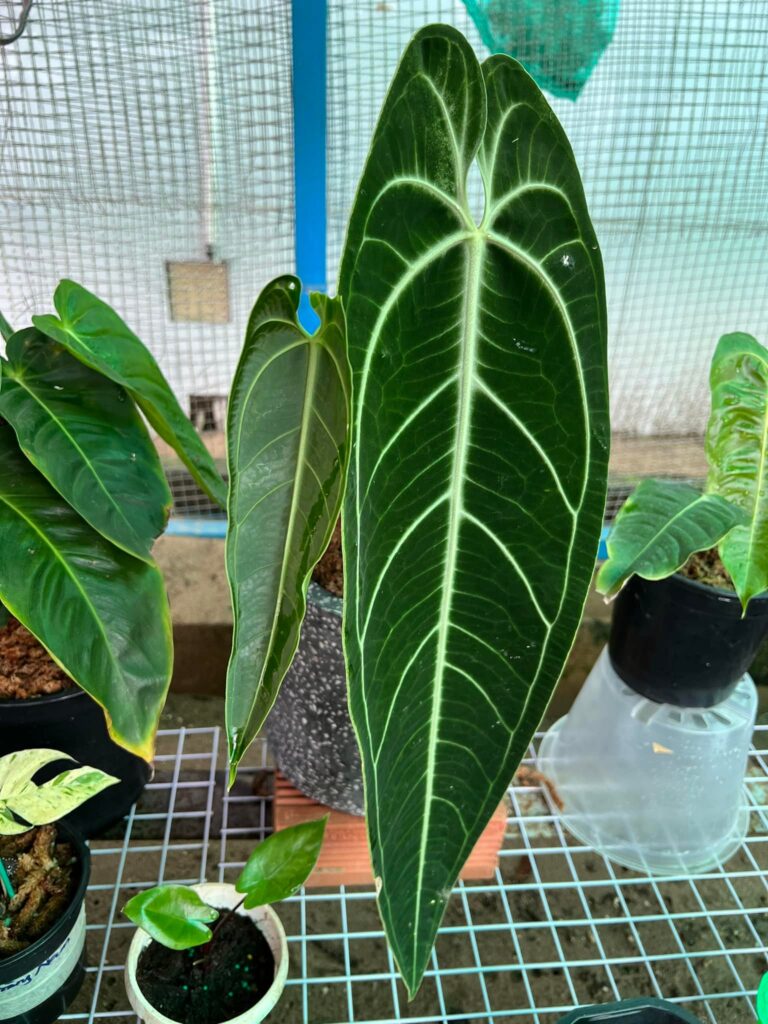
Caring for Your Anthurium Warocqueanum
Light
Your Anthurium Warocqueanum thrives in bright, indirect light for 8–10 hours daily. East or west-facing windows are ideal, while south-facing windows are also suitable if you diffuse the light with a translucent curtain or shade cloth. Placing the plant a few feet away from direct sunlight can help prevent sun-scorched leaves.
Light levels won’t change the form of your Anthurium Warocqueanum. The variations in appearance are due to natural differences within the species. However, adequate light will bring out the best natural color of your Queen.
Water
Originating from moist lowland forests, the Queen Anthurium is a thirsty plant, but it dislikes waterlogged roots. To find the right balance, water your plant only when the topsoil is dry, checking soil moisture every 2–3 days. This will help you meet your plant’s water needs without risking overwatering.
Signs of Over and Underwatering
Dry, crispy leaves with cakey soil indicate underwatering, while yellowing leaves and soggy soil suggest overwatering. Regularly check soil moisture to ensure your plant is healthy.
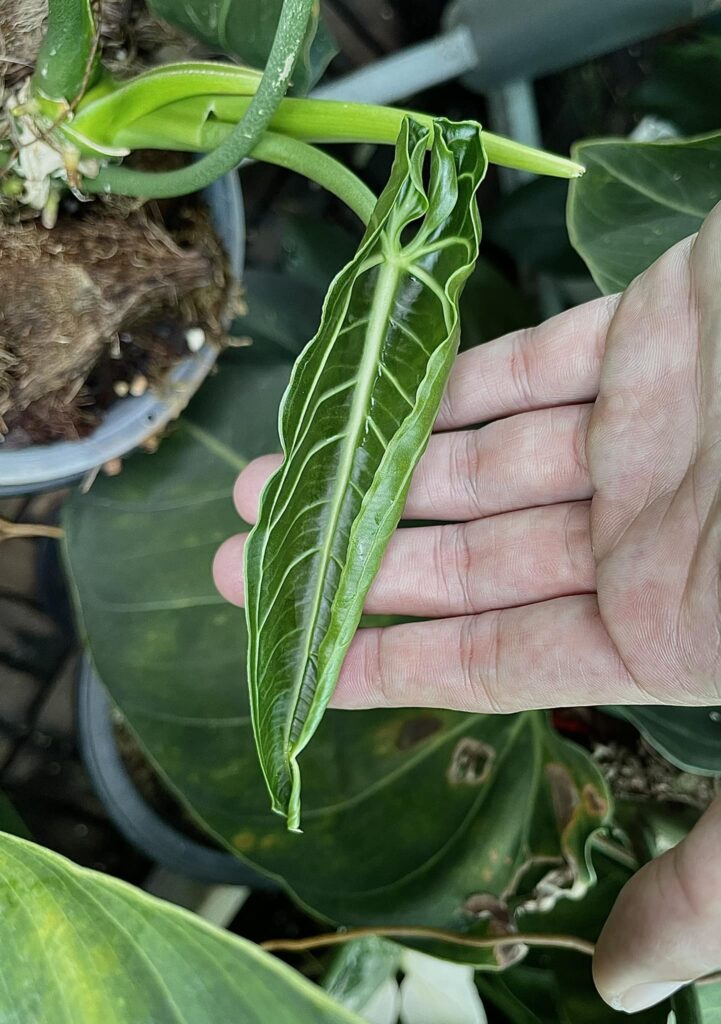
Humidity & Air Circulation
Anthuriums require high humidity levels. Ideally, your Anthurium Warocqueanum should have humidity above 70%, but it can tolerate 50–70%. If you don’t live in a tropical area, using a humidifier or a pebble tray can help increase moisture levels.
Misting your Anthurium Warocqueanum is not recommended, as fungi spores can develop on wet leaves, leading to leaf spot or leaf blight. Instead, some natural air circulation is beneficial. A standing fan placed around 10 feet (3 meters) away is a good option to create airflow without causing a draft.
Temperature
Mild indoor temperatures between 65–85°F (18–29°C) are ideal for the Queen Anthurium. While they can tolerate lower temperatures, this may slow their growth.
Flowering
Like many Aroids, the Anthurium Warocqueanum is not known for showy flowers, and blooms are rare indoors. However, a happy and mature Queen may produce inflorescences with a yellowish-green spathe and a central spadix, which can grow up to 15 inches (40 cm). You can deadhead the flowers to allow your plant to focus its energy on leaf growth.
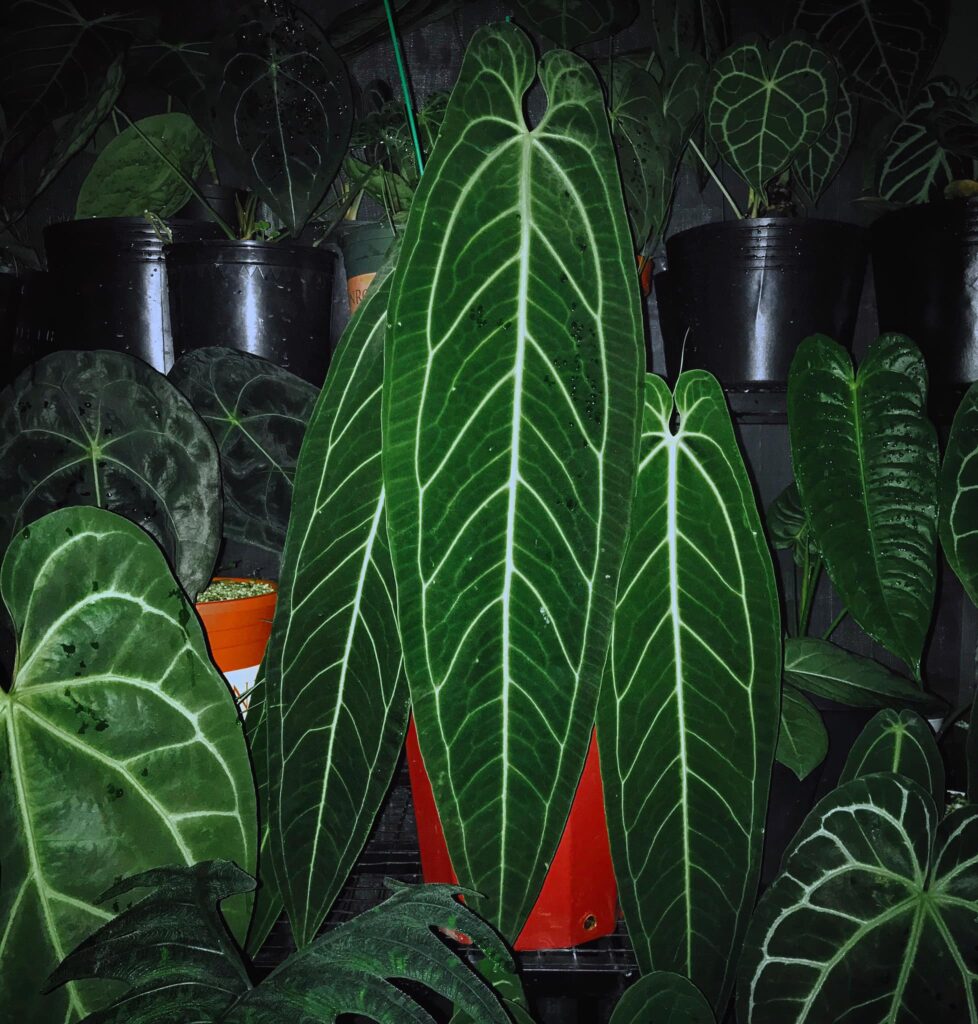
Growth
With sufficient light and nutrients, your Queen can grow rapidly during the spring and summer. While the Anthurium Warocqueanum grows large leaves, it doesn’t typically produce many. For young plants, it’s normal for an older leaf to die off when a new one forms, but having more than two leaves in a small pot is a sign of good health.
Soil or Growing Medium
As epiphytes, Queen Anthuriums rarely grow in soil in nature. Instead, they thrive in leaf litter, rock faces, or decomposing organic material. When growing indoors, use a loose, airy potting mix rich in nutrients with a slightly acidic to neutral pH (5.5–7.0). A well-balanced mix ensures proper water and air regulation at the roots.
A recommended potting mix includes:
- 2 parts indoor potting mix
- 1 part orchid bark
- 1 part perlite
- 1 part charcoal
- 1 part worm castings
Fertilizer
To support the growth of those long, velvety leaves, use a light dose of urea-free liquid houseplant fertilizer at 1/4 strength once a week during spring and summer. Over-fertilizing can cause leaf burn, so there’s no need to fertilize during fall or winter when growth naturally slows.
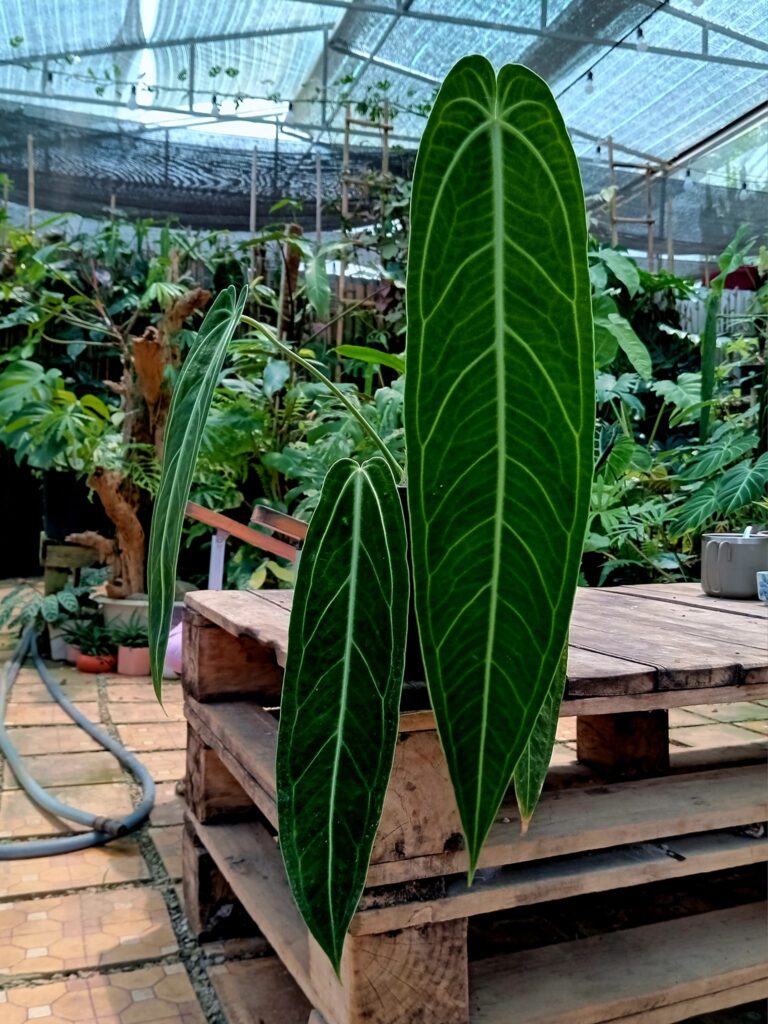
Climbing Support
Adding a moss pole or stake to your plant encourages its climbing habit, promoting larger leaves and faster growth. Aerial roots will attach to the support, improving the overall health of your plant.
Toxicity
Anthuriums contain calcium oxalate crystals, which are toxic to both animals and humans. Keep your Queen Anthurium out of reach of pets and children.
Propagation
The Anthurium Warocqueanum can be propagated by separating plantlets from the mother plant using a sterilized blade. Propagate in early spring when the plant is mature. Another method, seed propagation, is more complex and time-consuming.
Common Pests and Diseases
The most common issues for your Queen arise from fungal or bacterial diseases related to overwatering or wet foliage, and from typical houseplant pests like spider mites, mealybugs, aphids, fungus gnats, and scale.
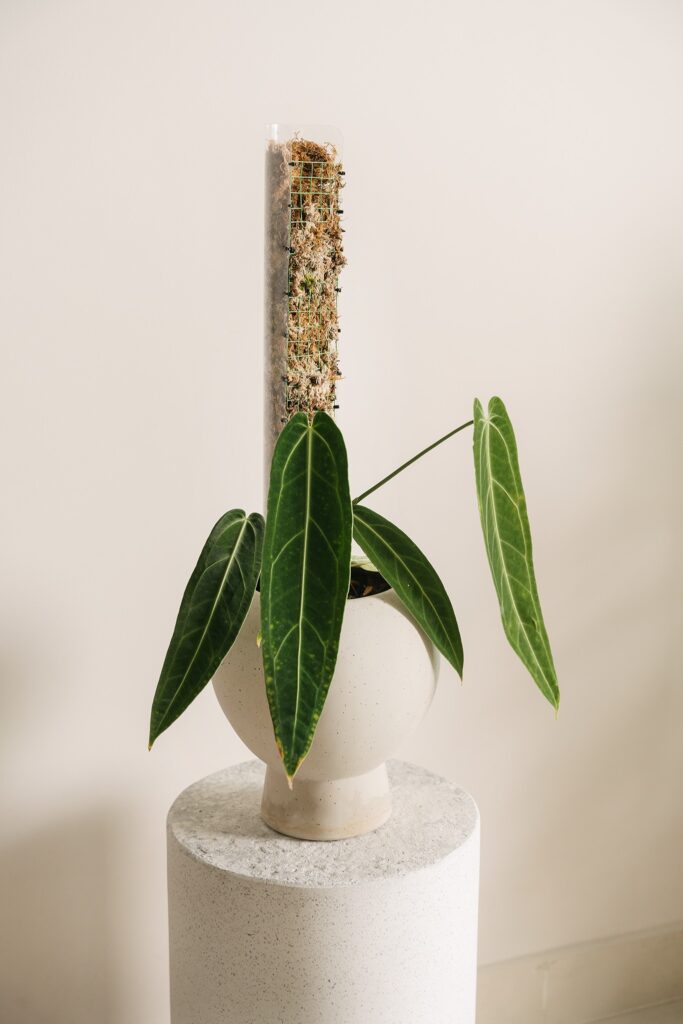
Root Rot
Root rot occurs from overwatering and leads to decaying roots. Healthy roots are thick and white, while affected roots become soft and dark. If your plant develops root rot, prune the infected roots and repot in fresh, dry soil.
Leaf Spot or Leaf Blight
These conditions are caused by moisture-loving bacteria or fungi and appear as dark lesions on leaves. Prune away damaged leaves, sterilize your scissors, and apply a fungicide to contain the spread.
Troubleshooting Your Anthurium Warocqueanum
If your plant is struggling, it may take some patience to uncover the cause. Yellowing leaves are often due to overwatering, but check for underwatering, nutrient deficiencies, pests, or low humidity as well. Leaf drop and brown leaves can also indicate issues with watering, soil, humidity, or light.
Frequently Asked Questions
Why is the Queen Anthurium so expensive?
Queen Anthuriums are moderately rare, costly to transport, and require specific growing conditions, contributing to their high price.
Is the Anthurium Warocqueanum rare?
Yes, they are considered moderately rare, found mainly in specific regions of Colombia. However, tissue culture has increased their availability.
